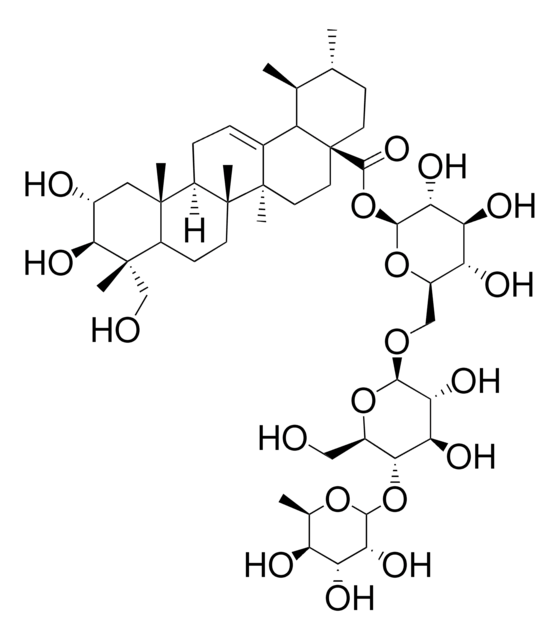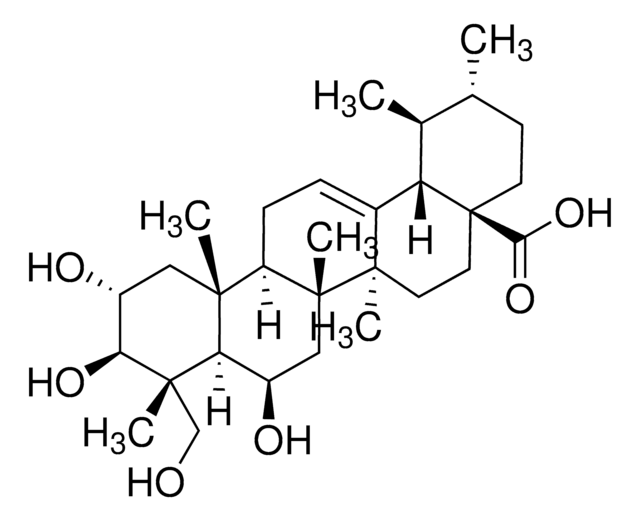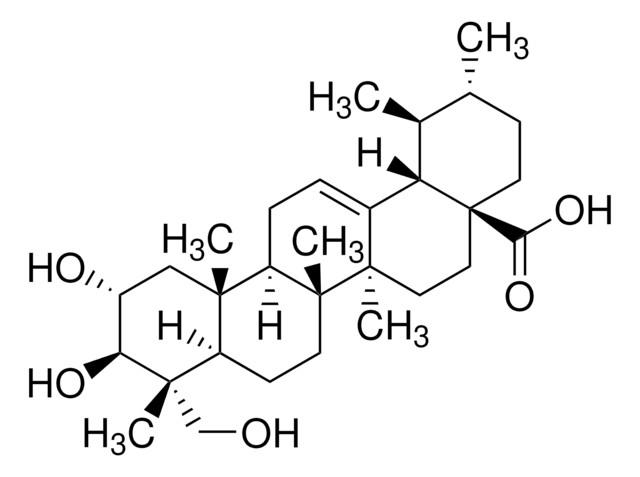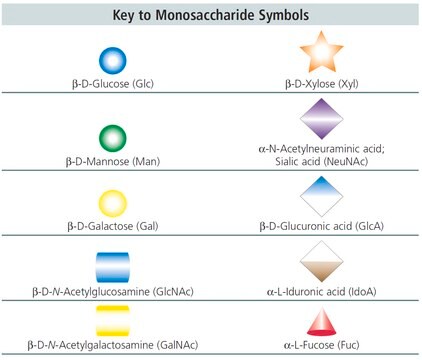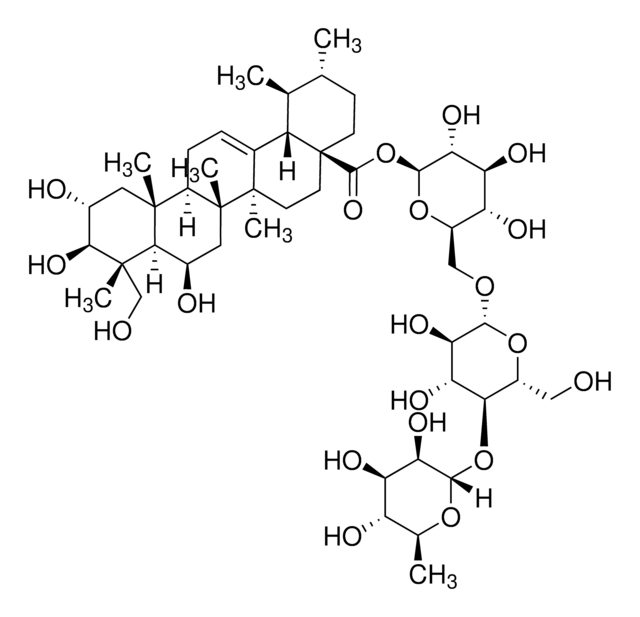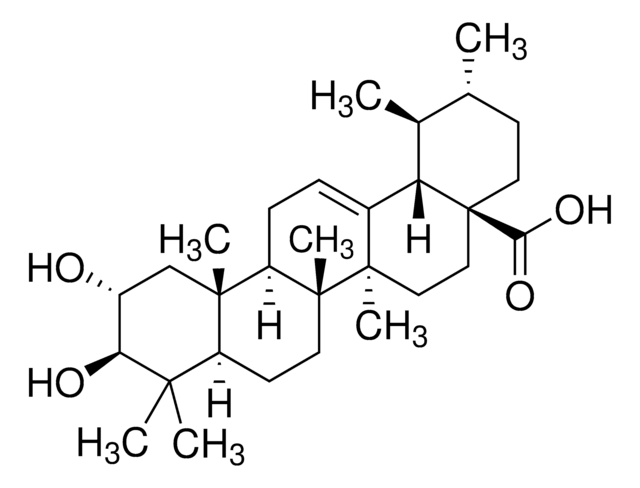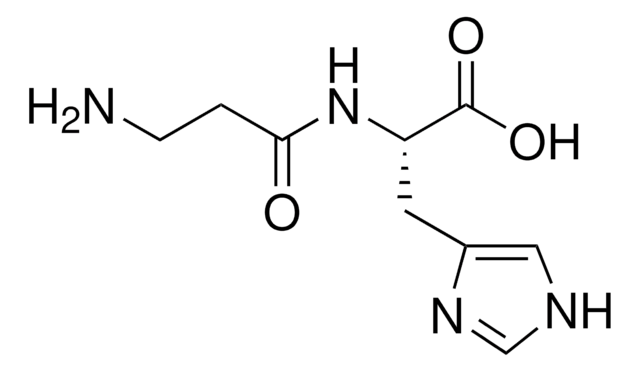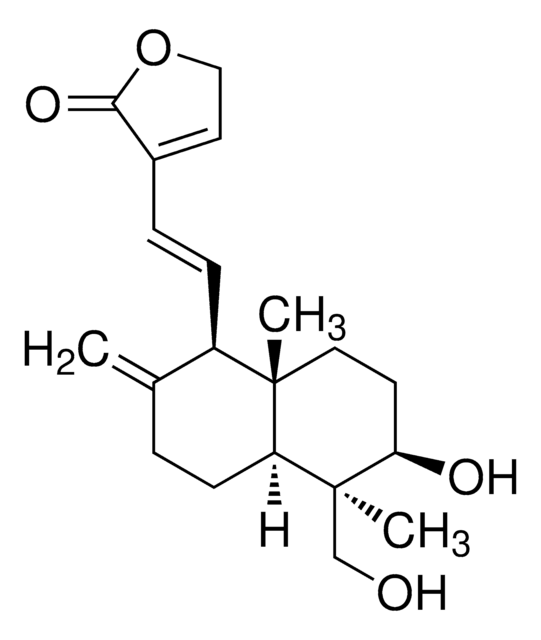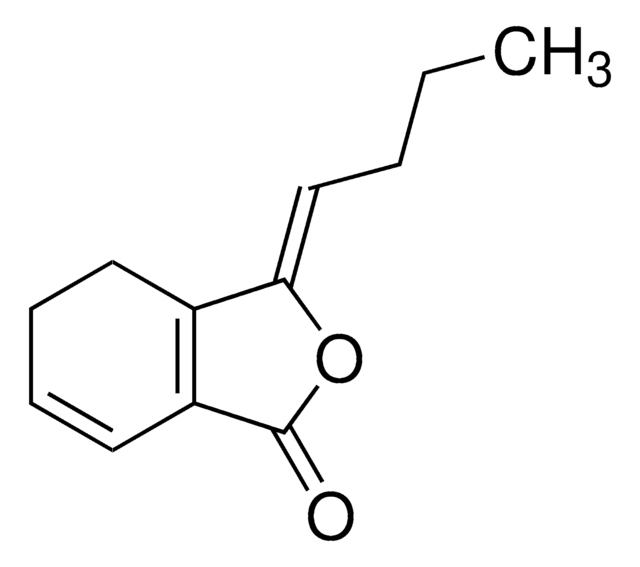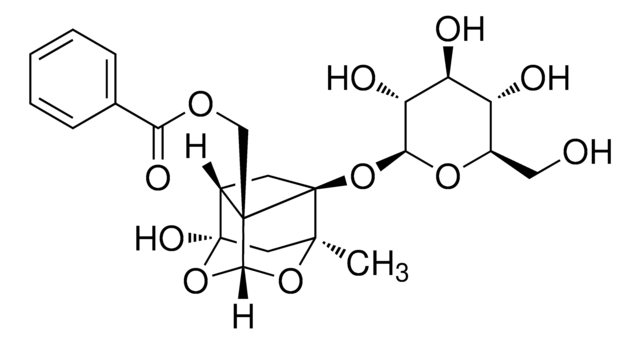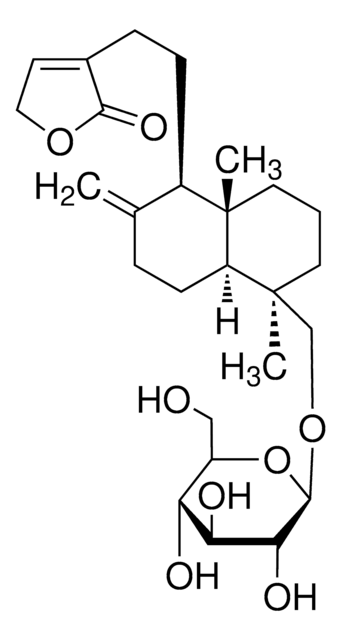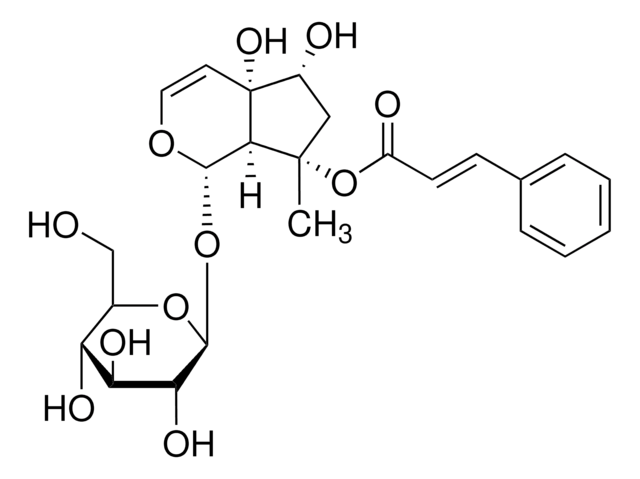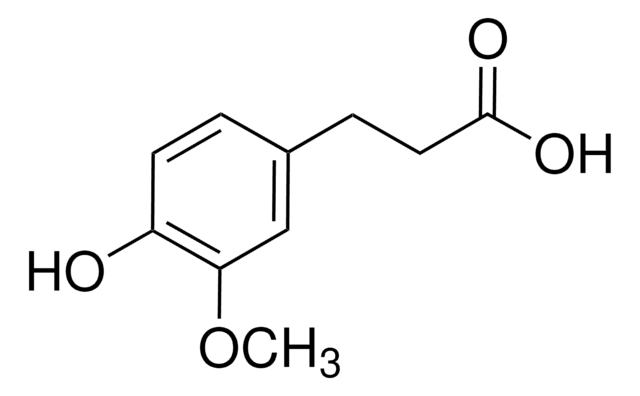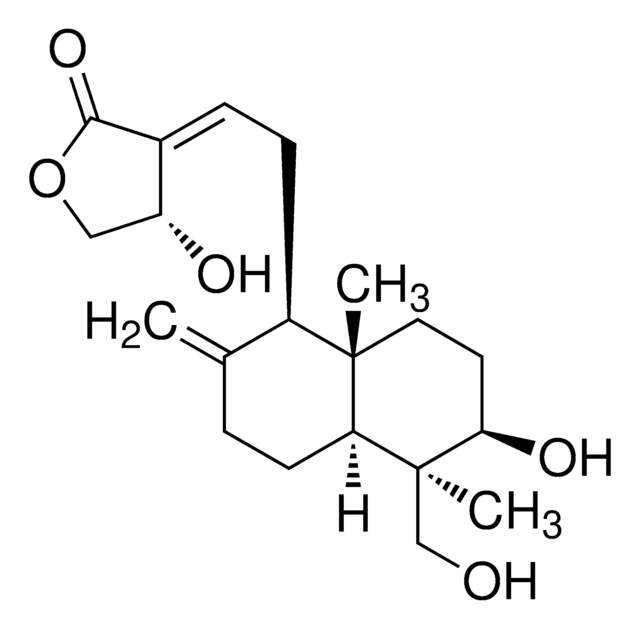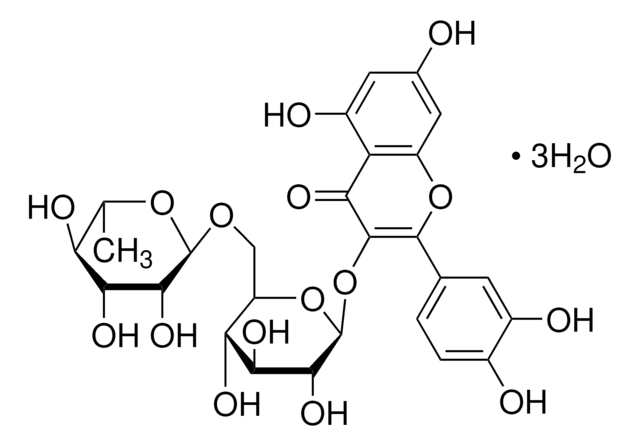M6949
Madecassoside from Centella asiatica
≥95% (HPLC)
Sinónimos:
Madecassoside, Asiaticoside A, Redermic
About This Item
Productos recomendados
Quality Level
assay
≥95% (HPLC)
form
powder
color
white to off-white
solubility
H2O: 1 mg/mL, clear, colorless
application(s)
metabolomics
vitamins, nutraceuticals, and natural products
storage temp.
2-8°C
InChI
1S/C48H78O20/c1-19-10-11-48(13-12-46(6)22(28(48)20(19)2)8-9-27-44(4)14-24(52)39(61)45(5,18-50)38(44)23(51)15-47(27,46)7)43(62)68-42-35(59)32(56)30(54)26(66-42)17-63-40-36(60)33(57)37(25(16-49)65-40)67-41-34(58)31(55)29(53)21(3)64-41/h8,19-21,23-42,49-61H,9-18H2,1-7H3
InChI key
BNMGUJRJUUDLHW-UHFFFAOYSA-N
¿Está buscando productos similares? Visita Guía de comparación de productos
Categorías relacionadas
General description
Application
Biochem/physiol Actions
Storage Class
11 - Combustible Solids
wgk_germany
WGK 3
flash_point_f
Not applicable
flash_point_c
Not applicable
Elija entre una de las versiones más recientes:
¿Ya tiene este producto?
Encuentre la documentación para los productos que ha comprado recientemente en la Biblioteca de documentos.
Los clientes también vieron
Nuestro equipo de científicos tiene experiencia en todas las áreas de investigación: Ciencias de la vida, Ciencia de los materiales, Síntesis química, Cromatografía, Analítica y muchas otras.
Póngase en contacto con el Servicio técnico